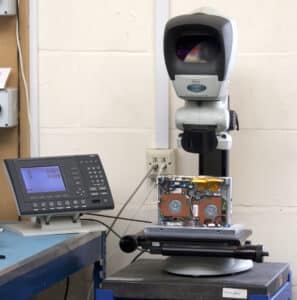How to best repair a Tape Drive?
So, where do we start?
Before you grab your T8 Torx Screwdriver. How do you repair or maybe not repair a Tape Drive? Can this be done by the enthusiast or is it best left to the professional? Over the last 50 years, Tape products have developed tremendously into highly sophisticated pieces of hardware. Back in the mid-20th century tape units weighed in at a hefty 40+ kilos and with a dazzling capacity of 170MB across 9 data tracks, were very much state-of-the-art.
Back in the day
During the latter part of the last century and into the 2000’s we had an array of products and formats. The choice was huge; 8mm Helical Scan, 4mm DAT, DLT, and QIC, from companies like; Exabyte, Quantum, HP, IBM, Tandberg and Sony.
Still very much current technology
To be fair, Tape is now a little more niche but still plays an incredibly important role. OK, it may not be the primary storage medium it was back in the day, but it still delivers the cheapest cost per terabyte of any data storage. Its green credentials are not to be sniffed at either. Unlike Disk Arrays that run 24×7 and need huge amounts of expensive cooling, tape can sit idle until required to perform. As tape is primarily near-line, there are some real data security advantages, including the likes of malware attacks. Some of the world’s largest data-centre providers are believed to be using tape. Anyhow, I’ll get off my tape-drive soapbox now.
Complex technology

Back to the product of today, LTO (Linear Tape Open) has become the de facto standard. It delivers capacities of up to 45 TB per cartridge (with the latest (LTO-9), with lightning-fast transfer rates. But even the previous versions of the LTO technology LTO-3, 4, 5 and onwards were very sophisticated devices. The heads themselves work to minute tolerances and are more akin to the technology used in Hard Drives. By their nature, the heads are extremely sensitive to ESD (Electrostatic discharge) and have to be handled with great care and precision. All head channels need to be tested to confirm they are performing within specifications. The loading mechanism and interface performance need to be checked. So, it’s no mean feat.
So, how do you repair or maybe not repair a Tape Drive?
Good news, you can put away that T8. Our engineers, who have on average 20+ years of tape drive repair experience, are more than happy to give you a hand. Gentronics can fully repair & refurbish modern LTO products, but also the full range of legacy devices we mentioned earlier. Using a blend of in-house developed software & test tools as we as original software developed by the manufacturers, we can restore your devices to full health, and to ‘back up’ that statement (excuse the pun), we’re more than happy to warranty our work.